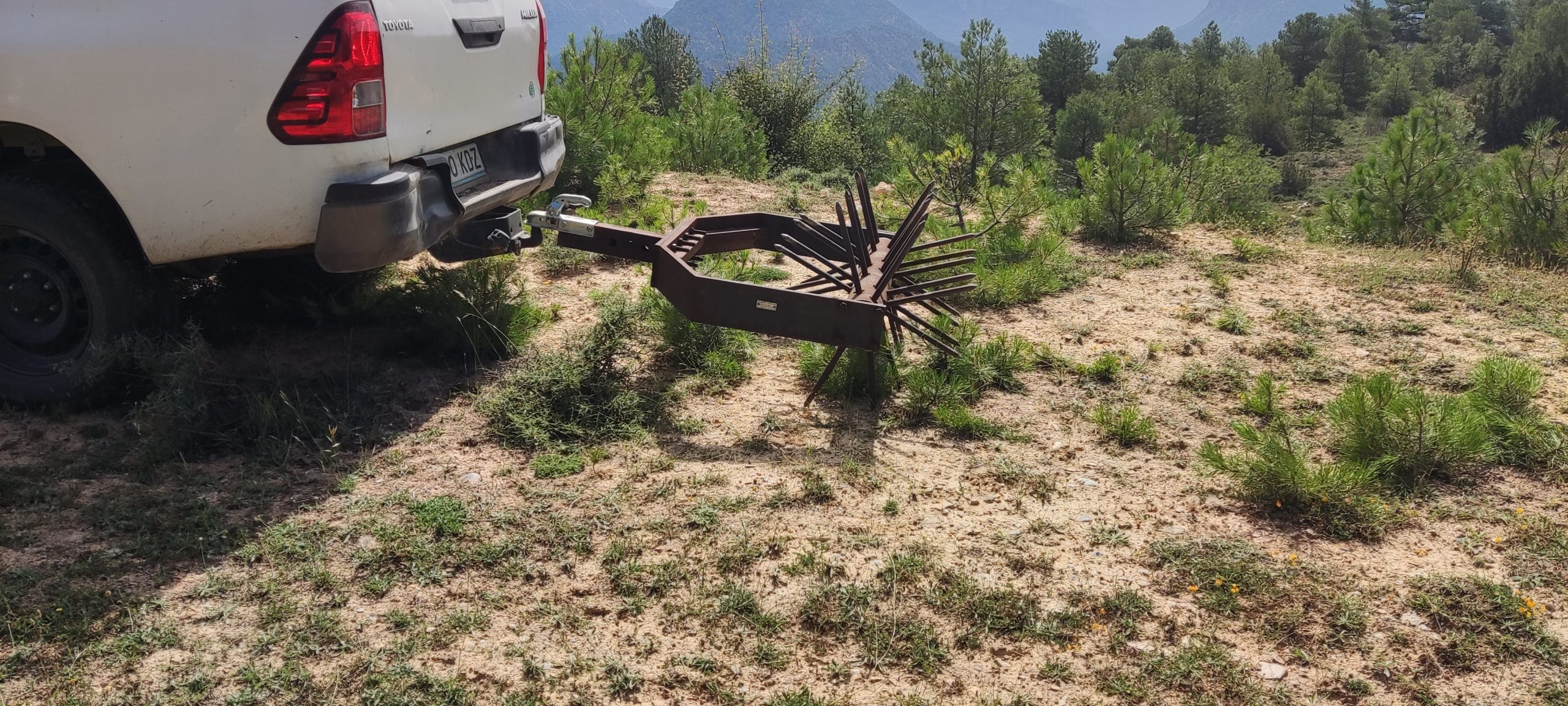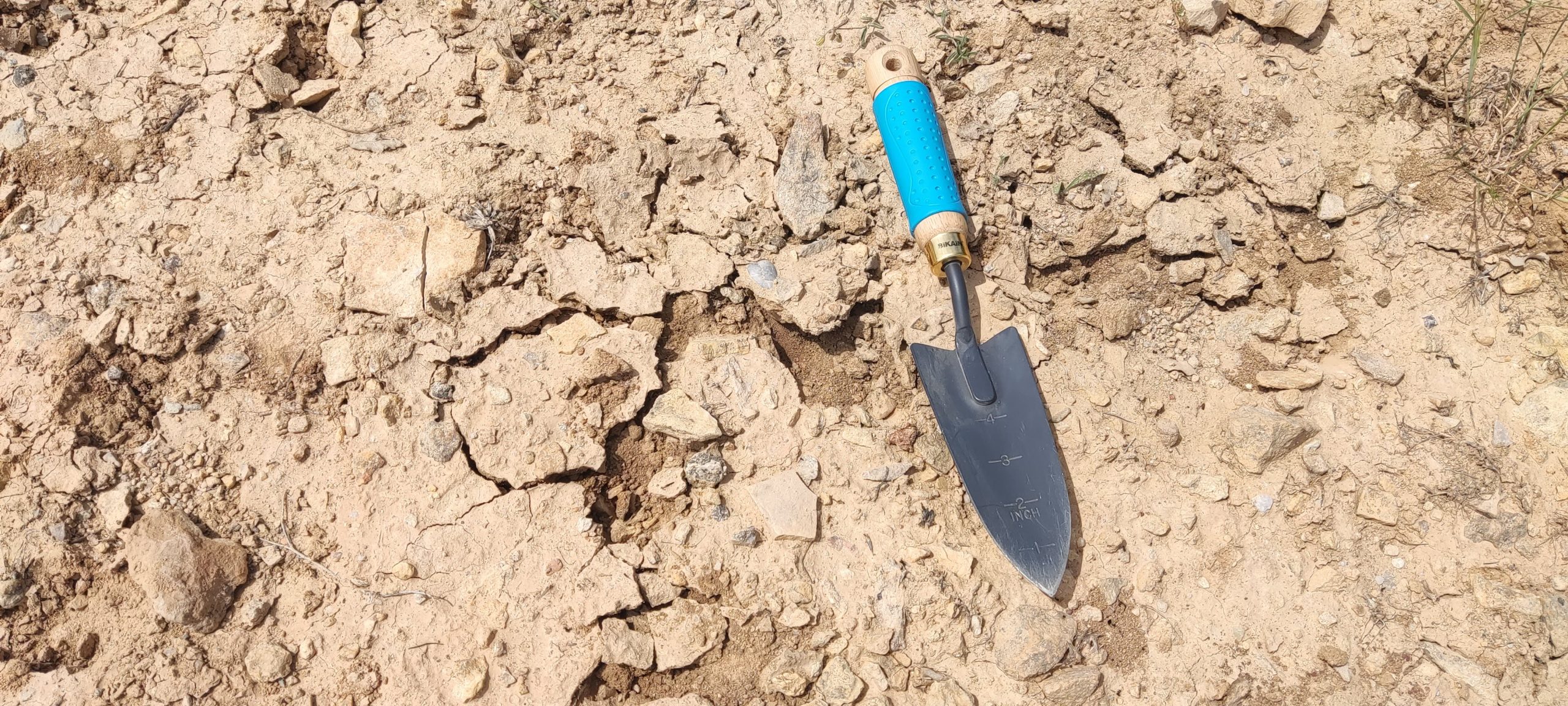The LIFE RIBERMINE project can add to its list one more novel technique used during the development of the project. In this case, it is the use of a specifically designed and patented tool to decompact sealed surfaces with the presence of surface crust in order to facilitate water infiltration and create small micro-topographies that also serve as seed traps.
The ideologist and developer of this patented tool is Satur de Alba, who directed the activity carried out in the Hoya Grande dump, in Peñalén (Guadalajara, Spain). The activity was coordinated by Javier Barrado and executed by the GEACAM maintenance crew in the Serranía de Cuenca (Esteban J. Valdez y Vicente García de Paredes).

Photograph of the soil decompaction tool at the Hoya Grande dump.
This is the first time that this innovative technique has been used in mining restoration. In this case, the action took place in early summer, after the ground had been tempered by the late spring rains. The implement was adapted for use on the surface with the least vegetation cover of the Hoya Grande dump, built in the 1990s with tailings from the Santa Engracia mine. Its results will be seen after the summer storms and the first autumn rains.

Detail of the surface after the passage of the implement. The holes generated and the broken surface crust can be seen.

